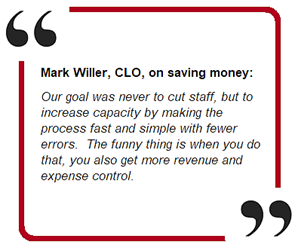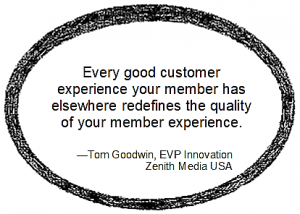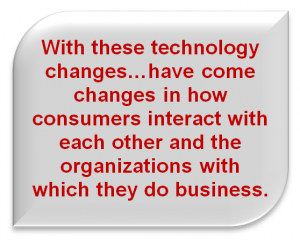602-840-0606
Toll-Free: 800-238-7475
contact@cmyers.com
| Cookie | Duration | Description |
|---|---|---|
| cookielawinfo-checkbox-analytics | 11 months | This cookie is set by GDPR Cookie Consent plugin. The cookie is used to store the user consent for the cookies in the category "Analytics". |
| cookielawinfo-checkbox-functional | 11 months | The cookie is set by GDPR cookie consent to record the user consent for the cookies in the category "Functional". |
| cookielawinfo-checkbox-necessary | 11 months | This cookie is set by GDPR Cookie Consent plugin. The cookies is used to store the user consent for the cookies in the category "Necessary". |
| cookielawinfo-checkbox-others | 11 months | This cookie is set by GDPR Cookie Consent plugin. The cookie is used to store the user consent for the cookies in the category "Other. |
| cookielawinfo-checkbox-performance | 11 months | This cookie is set by GDPR Cookie Consent plugin. The cookie is used to store the user consent for the cookies in the category "Performance". |
| viewed_cookie_policy | 11 months | The cookie is set by the GDPR Cookie Consent plugin and is used to store whether or not user has consented to the use of cookies. It does not store any personal data. |

CECL: Takeaways and Considerations from Recent Workshops
ALM, Strategic Planning Blog PostsCECL is much more than an accounting issue and being focused only on compliance is shortsighted. The effects of CECL will transcend every area of credit unions and the implications, if they are understood, can be anticipated and prepared for. Communication with senior management is crucial to gain buy-in to these implications.
C. myers has been working tirelessly with credit unions and credit risk simulation vendors to help the industry better prepare for changes that will happen due to CECL. The objective of this work has been to not only help individual credit unions, but also, to gather learnings that can help all credit unions. This process has included one-on-one work with credit unions over the last six months and focus group workshops of large credit unions. The two workshops included a dozen credit unions with an average asset size above $4 billion. CECL can impact all institutions, large and small, but the intent of starting with large credit unions is to get takeaways from credit unions with more resources to devote to solutions. Following, you will find ideas from the interactive workshops in Phoenix, Arizona and Tampa, Florida.
An attending CFO from a credit union with assets greater than $5 billion said, “I figured the hard work was already done as we already contracted with a vendor to do the calculations. I am realizing that this is just the beginning and there will be a lot of important decisions and work to do going forward.” That sentiment represented the overall view of the attendees as the data gathering and getting a number is just the beginning.
Attendees noted that c. myers’ independence was an added benefit. They were able to work with each credit union on understanding the implications of CECL, regardless of the vendor and methodology being used.
Gail Wean, Senior Vice President/Chief Financial Officer, Grow Financial FCU of Tampa, Florida, commented on her c. myers CECL workshop experience, “The presenters exceeded my expectations. This was one of the best presentations of complex information in my career. Exceptional knowledge base, and organization, and communication of CECL.” Much of the focus of the workshop was not only to gain knowledge, but to be positioned to use tools and examples to communicate potential strategic implications to others when attendees are back at the credit union.
Brett Fisher, Vice President of Asset & Liability Management, Founders FCU stated, “Participation in the CECL workshop has our credit union not only much better prepared to tackle CECL, but their wisdom set the foundation for utilizing CECL data analytics to improve business decisions.”
10 Takeaways
Below are 10 of the many key takeaways identified during the workshops:
Currently, institutions have been so focused on the data gathering that they haven’t had a chance to look beyond the data to the strategy. CECL will change the way earnings, net worth and the impact of growth, and risk in the future will be measured.
No one has managed an institution using CECL rules. The manner in which financials will become disconnected from an institution’s financial strength will differ greatly from the rules that all have applied when managing an institution. It will take time to adjust to this change. Starting now and working with others will better prepare institutions.
C. myers will be holding additional CECL workshops in 2018. For more information, please call 800.238.7475.
Where Is Your Deposit Growth Coming From?
ALM, Liquidity Blog PostsMany financial institutions have become increasingly concerned about liquidity and for good reason. While deposit growth is often celebrated, where that growth is coming from can have important implications with respect to liquidity, A/LM, and future plans around membership and asset growth. Is your institution’s deposit growth coming primarily from growth in new accounts or growth in average balances?
For some credit unions, the change in average deposit balance can represent a substantial risk to maintaining sufficient liquidity. The example data displayed below shows a credit union that over the last 10 years increased average share balances by 51%, share drafts by 76%, and money markets by a whopping 139%.
If you look at the lower portion of the matrix above, note that 73% of growth in shares was from increasing average balances, 27% of the growth was from new accounts. Money markets and share drafts were even more lopsided toward average balance growth. The vast majority of this institution’s deposit growth has come from increasing average balances, as opposed to adding new accounts.
Is this growth because relationships are deeper or is it that members are sitting on more money when the rate alternatives are so low? What could this mean for liquidity exposure, if rates go up or the market gets excited about keeping money somewhere else? Consider that share accounts could be materially more sensitive to moving money than they were in the past. Combine this information with the knowledge that in the last rising rate environment smartphones did not exist—liquidity risk has increased, as it is now easier than ever to move money.
Another way to look at this could be to consider what the deposit growth matrix would look like if the growth were pegged to inflation (conservatively assuming a 2% inflation rate over the last 10 years). If average balances grew at a 2% annualized rate, the credit union would have accumulated 18% less in regular shares, 30% less in share drafts, and 48% less in money markets. This would represent almost $522M fewer deposit dollars over the same 10-year period.
Additionally, if a credit union has become more active in indirect lending, it is important to understand how indirect members are impacting average deposit balances (since indirect members often carry small or minimum share balances). If indirect account holders are excluded, the average share balance utilizing the same example credit union would have increased by 63% over the same period of time (compared to 51% including indirect members), and increases in average balances would account for 94% of the growth in shares as opposed to 73%. For some credit unions, the impact of indirect members could be more significant.
From a policy perspective, having this type of data readily available can help to inform contingency funding plans and how you stress your liquidity simulations. Some credit unions evaluate their bad case liquidity scenario by analyzing growth in average balances over time and assuming that a portion of that “excess” growth leaves the credit union. This can help put some historical context around your liquidity stress testing.
Financial institutions are potentially entering unprecedented territory with respect to the pattern of interest rates, and how members will behave is unknown. As you plan for liquidity, consider evaluating how your average deposit relationships have changed, what it could mean for your institution, and what you could do now to prepare.
C. myers has posted several entries on our blog over the last year about this important topic. Click here to see more.
c. notes – Continuous Process Improvement Supports Strategy
Process Improvement, Strategic Planning Blog PostsWESTCONSIN CREDIT UNION: A PROCESS IMPROVEMENT CASE STUDY
If you grew up in western Wisconsin, you probably knew this credit union as a great place to bank that’s full of friendly, helpful people. It has celebrated a long history of successes starting with its agricultural roots and continuing to today’s modern mix of urban and rural membership. Meet $1.1 billion WESTconsin Credit Union (WESTconsin), headquartered in Menomonie, Wisconsin. This organization is focused—and one of the things they’re focused on is process improvement. Why process improvement? Well, there’s efficiency and expense control, but for WESTconsin, process improvement is more than that.
is focused—and one of the things they’re focused on is process improvement. Why process improvement? Well, there’s efficiency and expense control, but for WESTconsin, process improvement is more than that.
Superior processes are an integral part of the strategy. In 2015, the credit union decided that, in order to deliver meaningful member experiences, it must develop a new core strength: Simple, streamlined processes for members and employees. Clearly, this translates into more than improving some key processes. To make it a true core strength, the credit union must establish an organizational framework for continuous process improvement across the enterprise. Think of it as a process for:
This framework keeps the organization focused on continuous process improvement.
When WESTconsin decided to make processes a strategic area of focus, they asked c. myers to help with a pilot process improvement for consumer lending. That was a little over a year ago. Today, the credit union has a process improvement/project management specialist in place and is working with c. myers to establish its enterprise process improvement framework. WESTconsin is still on its journey, but we recently checked in with Mark Willer, Chief Lending Officer (CLO), to get his perspective on the experience so far.
WHAT DOES IT TAKE TO MAKE “SIMPLE, STREAMLINED PROCESSES” A CORE STRENGTH?
Willer explained that for WESTconsin, process improvement is perfectly aligned with its mission, core values, and value proposition. Simple, easy, and fast are part of a quality member experience, which is part of the strategy. This link between process improvement and the credit union’s highest-level strategy translates to unwavering support from the senior team for the process improvement strategic initiative.
quality member experience, which is part of the strategy. This link between process improvement and the credit union’s highest-level strategy translates to unwavering support from the senior team for the process improvement strategic initiative.
Commitment from the top is one of the keys to success for incorporating process improvement into the very essence of the credit union. It is not uncommon to see organizations hire a process improvement specialist only to find success evasive because the support at the top isn’t strong enough or focused enough.
The fact that the process improvement mandate comes from the top signals its importance. Part of that support means that each major process improvement endeavor has an executive sponsor that sees it through to completion.
Executive sponsor key roles:
GETTING STARTED
As a first step toward simple, streamlined processes, WESTconsin tackled consumer lending, creating a clear objective: Improve and optimize the consumer lending process, resulting in x% of qualified A & B consumer loans being decisioned within x minutes. The objective was directly related to the credit union’s strategy.
The specific piece of consumer lending the credit union wished to improve when engaging c. myers was the vehicle lending process. This piece wasn’t broken—not by a long shot—but in considering the competitive environment, leadership asked themselves some questions:
credit union wished to improve when engaging c. myers was the vehicle lending process. This piece wasn’t broken—not by a long shot—but in considering the competitive environment, leadership asked themselves some questions:
Within months of completing their process improvement, they saw the following progress in their vehicle lending numbers:
Figure 1: Year-over-year percentage change measured 6 months after process improvement engagement
There is often a strong correlation between faster approval times and higher funding ratios, because faster approval times represent an important aspect of the member experience. The following example doesn’t reflect WESTconsin’s numbers, but consider the impact to the bottom line that an 8% increase in funding of approved applications (apps) can have. In this example, the credit union receives 3,000 apps per month (36,000 per year), approves 80%, and funds 75% of the approved apps. Using an average loan balance of $20K, this results in $432M in fundings per year. If the percentage of approved apps funded increases by 8%, from 75% to 83%, the credit union funds $46M more per year.
The additional funding represents a boost to the bottom line without bringing in or processing any more applications.
THE RECIPE: SUCCESSFULLY IMPROVING A PROCESS
WESTconsin used a proven method for effective process improvement that included the doers in order to:
The team was excited about the changes and helped make them stick. Moreover, no additional staff was added to support the new process.
ADVICE FROM WESTCONSIN CREDIT UNION
When asked what advice Willer would give to other organizations that are considering process improvement, here’s what he offered:
Emphasis on an exceptional member experience has long been a driver of WESTconsin’s business model. Nevertheless, the definition of an exceptional member experience continues to evolve. Just a few years ago, the ability to conduct business on a smartphone at any hour of the day, or to be able to complete a loan without setting foot in a branch, was not on anyone’s radar screen, and it certainly wasn’t an expectation. But both traditional and non-traditional competitors are redefining consumer expectations. Providing an experience that members are excited to share with others requires regular evaluation of what that experience is, in addition to actually providing it.
wasn’t an expectation. But both traditional and non-traditional competitors are redefining consumer expectations. Providing an experience that members are excited to share with others requires regular evaluation of what that experience is, in addition to actually providing it.
INTO THE FUTURE
As WESTconsin continues on its journey toward making simple, streamlined processes for members and employees a core strength, many more processes will be improved and an enterprise process improvement framework will be put in place. In the meantime, the benefits of process improvement are already being felt.
By choosing to create a strategic focus on process improvement, this highly successful credit union is positioning itself to continue delivering exceptional member experiences far into the future—even as the definition of “exceptional member experience” changes over time.
process improvement, this highly successful credit union is positioning itself to continue delivering exceptional member experiences far into the future—even as the definition of “exceptional member experience” changes over time.
ABOUT C. MYERS
We have partnered with credit unions since 1991. Our philosophy is based on helping clients ask the right, and often tough, questions in order to create a solid foundation that links strategy and desired financial performance.
We have the experience of working with over 550 credit unions, including 50% of those over $1 billion in assets and about 25% over $100 million. C. myers helps credit unions think to differentiate and drive better decisions through facilitating more than 130 Strategic Planning, Strategic Leadership Development, Process Improvement, and Project Management sessions each year, and providing A/LM, Liquidity, and other financial analyses.
Download this article
Westconsin Credit Union: A Process Improvement Case Study
Process Improvement Blog PostsRemaining Relevant Through Leveraging Technology and Member Needs
Consumer Behavior and Technology, Strategic Planning Blog PostsNow, fast-forward, as does the article In 10 Years, Your iPhone Won’t Be a Phone Anymore (Source: The Wall Street Journal). In this article, the author imagines a future where the consumer is more wired-in than ever before. Smarter, wearable technology, artificial intelligence, augmented reality—it’s almost overwhelming. Our gadgets may literally direct our daily lives, according to this article. Whether or not the future turns out the way this article describes, we can surely bet it will make the technology we have today seem ancient, just as the current iPhone makes the original model look outdated. How will your credit union’s technology change? What new technologies might there be in 10 years that do not exist today? How might your members choose to do business with you in 2027? Are you leveraging the data that is already available today, and new data that may be available in the future, to make decisions and anticipate member needs?
What new technologies might there be in 10 years that do not exist today? How might your members choose to do business with you in 2027? Are you leveraging the data that is already available today, and new data that may be available in the future, to make decisions and anticipate member needs?
These changes not only impact traditional competition, but also have facilitated new entrants looking to disrupt the industry.
How will your value proposition be apparent in this environment? Consider strategic sessions revolving around this topic with outcomes focused on actions that can be taken in the near term, intermediate term, and long term to be positioned for relevancy in the future.